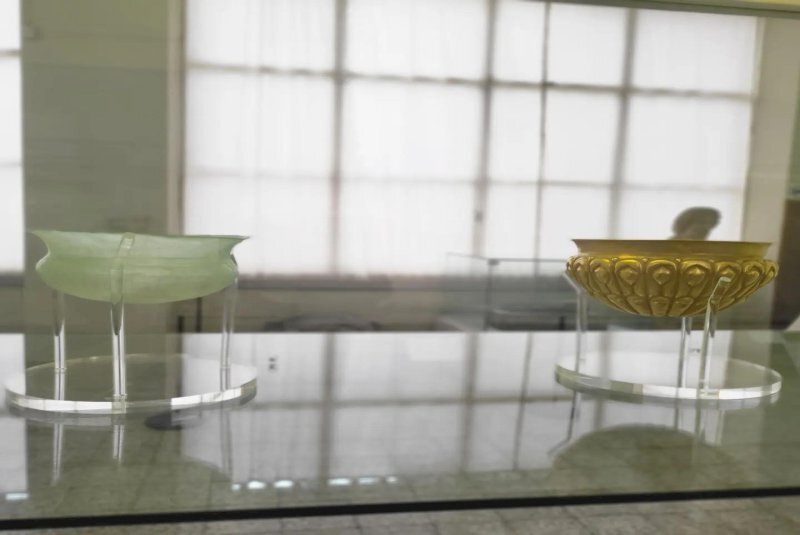Exquisite Achaemenid glasswork goes on show at National Museum of Iran

TEHRAN – A rare, exquisite Achaemenid glasswork has been put on show at the National Museum of Iran.
“On loan from (the neighboring) Abgineh Museum, the object is an exquisite rhyton, made of glass, which bears a cow being attacked by a lion,” CHTN quoted Jebrael Nokandeh, director of the National Museum, as saying on Tuesday.
“The Achaemenid-era (c. 550 – 330 BC) object is a masterpiece because, as a glasswork, its creator artist had a very limited time to make decorations.”
The artist should have finished his work before the molten dough gets cold, and it is difficult to bring such a complex depiction, even with today’s technology, Nokandeh said.
The Achaemenid [Persian] Empire was the largest and most durable empire of its time. The empire stretched from Ethiopia, through Egypt, to Greece, to Anatolia (modern Turkey), Central Asia, and India.
The royal city of Persepolis ranks among the archaeological sites which have no equivalent, considering its unique architecture, urban planning, construction technology, and art. Persepolis, also known as Takht-e Jamshid, whose magnificent ruins rest at the foot of Kuh-e Rahmat (Mountain of Mercy) is situated 60 kilometers northeast of the city of Shiraz in Fars province.
The city was burnt by Alexander the Great in 330 BC apparently as revenge on the Persians because it seems the Persian King Xerxes had burnt the Greek City of Athens around 150 years earlier. The city’s immense terrace was begun about 518 BC by Darius the Great, the Achaemenid Empire’s king. On this terrace, successive kings erected a series of architecturally stunning palatial buildings, among them the massive Apadana palace and the Throne Hall (“Hundred-Column Hall”).
This 13-ha ensemble of majestic approaches, monumental stairways, throne rooms (Apadana), reception rooms, and dependencies is classified among the world’s greatest archaeological sites. Persepolis was the seat of the government of the Achaemenid Empire, though it was designed primarily to be a showplace and spectacular center for the receptions and festivals of the kings and their empire.
AFM
